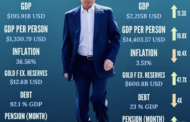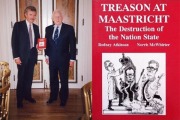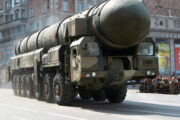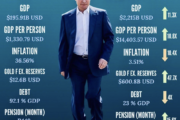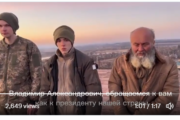Translated from an article by our friends at german-foreign-policy.com
TRENTO/BERLIN – On the 19th August 2004 in Trento Italy the former German Chancellor Helmut Kohl accepted the De Gasperi Prize “for services to the “Construction of Europe”. The occasion was the 50th anniversary of the death of De Gasperi, the first post war Italian Prime Minister. The Roman Catholic politician was a collaborator of Mussolini, the Italian Fascist dictator and Hitler ally and later an architect of the re-militarisation of Europe to face the Soviet threat. The German Christian Democrat Party’s Konrad Adenauer Foundation has put on an exhibition in Berlin celebrating de Gasperi’s work.
The appearance of the former German Chancellor in the North Italian town where De Gasperi was born, was the occasion for a mass in the Trento Cathedral celebrated by Cardinal Battista Re. (NB Kohl was always particularly close to the Vatican. After losing office he was received on the following Sunday by the Pope in Rome – ed)
Even the prize giving itself was a very Roman Catholic occasion for the Church claims to have produced de Gasperi, Adenauer and the French politician Robert Schumann, three Christian architects of post war Europe. As the Konrad Adenauer Foundation emphasises, de Gasperi’s and Adenauer’s “European vision” had arisen out of their “struggle against the fascist terror”.
In that the foundation is participating in the promotion of a European legend which has also been nourished by the German Foreign Office as an aura of respectability for today’s European Union. In fact the political uniting of Western Europe after the war was driven in the main by former collaborators of Italian fascism and German Nazism. Typical of these people was Alcide de Gasperi (with whose prize Helmut Kohl, the creator of the modern European Union, was pleased to associate himself – ed). As even the Rome press close to the Italian Government now admits the then journalist de Gasperi belonged to that “Catholic world” of the early days of the Mussolini regime with which they “collaborated and maintained close contacts”. (On the day Mussolini came to power truck loads of nuns paraded through the streets of Rome giving the fascist salute -ed). As the clerical fascist plans were not realised in Rome, de Gasperi found a bolt hole with his ideal patron – as librarian in the Vatican. At this point the Vatican made overtures to the Nazis and concluded the notorious Concordat (1934), despite German persecution of its opponents, among them many Catholics. Unprotected by the Vatican they ended up in German concentration camps.
De Gasperi’s guilt of involvement in the criminal dictatorships of Germany and Italy made him an ideal subject for the secret services. Like other confidants of a group in Bern led by the US expert Alan Dulles he became open to blackmail. Art the same time he had contacts which would have been useful to those seeking to suppress resistance groups in Europe. Even during the Nazi occupation de Gasperi was involved in intrigues against parts of the resistance in order to break up left wing Catholicism and communist partisans. After becoming Italian President in December 1945 de Gasperi pleaded for an end to the criminal prosecution of many Mussolini supporters. His confirmation as head of the 1948 government was pushed for by both the Vatican and the US Secret Services who financed de Gasperi’s re-election to the tune of several hundred million Dollars.
Subsequently de Gasperi became an activist for the “European idea” which he propagated together with Konrad Adenauer – with the financial support of the US Government. He took advantage of the award of the Charlemagne Prize in Aachen in 1952 to commit himself to the European clerical imperial model. He asserted that under Charlemagne “a happy combination of the great Roman traditions, the new Christian culture” had been achieved in the struggle against the “threats from the East”.
INHERITANCE
Equally after the war de Gasperi, again with the help of his friends in the American secret services, pursued the founding of the “European Defence Community” including German military units. Since the inclusion of German soldiers should not be disturbed by the recollection of previous war crimes de Gasperi began a campaign in his cabinet to suppress the pursuit of those responsible for Nazi massacres in Italy.
On the occasion of their Berlin exhibition the Konrad Adenauer Foundation claimed that de Gasperi had bequeathed “an inheritance” which must be “carried forward by all Europeans”. The Italian Foreign Minister is to visit the exhibition on 31st August and the day before the President of the Roman Senate is to give a speech on de Gasperi, the “founding father of the EU” in the German Reichstag!


